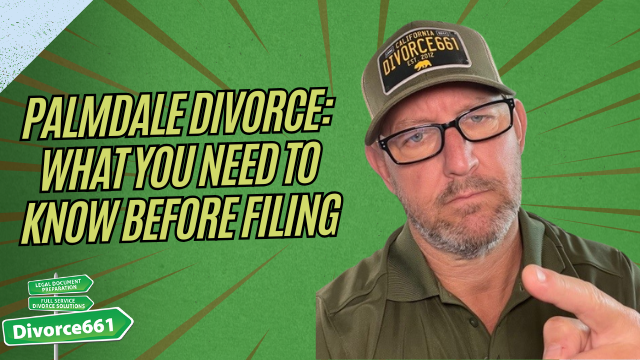How to Finalize a Divorce in Glendale in 6 Weeks
If you are filing for divorce in Glendale and want the fastest clean path forward, there is a practical route that gets your paperwork completed in as little as six weeks. That does not shorten California’s legal waiting period, but it does mean everything can be prepared, filed, reviewed, and approved well before the six month clock runs out. With electronic filing through the Los Angeles County Superior Court and a cooperative, amicable approach, you can avoid court appearances and move through the process remotely.
How the 6-Week Fast Track Works
The fast track is straightforward when both spouses agree on the terms and act promptly. The core phases are filing, serving, financial disclosure, settlement drafting, and final judgment submission. Each step can be completed remotely thanks to full electronic filing with the Los Angeles County Superior Court.
- File electronically. Initiate the case through the court portal so the clock starts and official case numbers are issued.
- Get served quickly. Prompt service establishes the official start date for the statutory waiting period. Service can be handled by a process server or other approved method.
- Complete financial disclosures without delay. Both parties exchange income and asset information as required. Completing disclosures early prevents later hold ups.
- Draft a settlement agreement. Put agreement terms in writing, covering property division, debts, support if any, and any other relevant items.
- Prepare and submit the final judgment package. Assemble the judgment, proposed decree, and supporting documents and file them for court review.
- Court review and approval. Once the court verifies the paperwork is complete and accurate, your judgment can be approved long before the six month waiting period ends.
Important Timing Note
Completing and getting your judgment approved early is not the same as the divorce being legally finalized. California law requires a minimum waiting period of six months after service. That waiting period still applies, but by finishing every step early you can sit back and wait with everything already resolved and on file.
Why this works well in Glendale
The Los Angeles County Superior Court supports full electronic filing, which eliminates many logistical delays. Remote handling means no courthouse trips, fewer scheduling conflicts, and faster document processing. When both parties are cooperative and all forms are accurate, the process becomes administrative rather than adversarial.
Real life example
We helped a Glendale couple file, serve, complete disclosures, and submit their entire judgment package within six weeks. Their paperwork was approved early and now they are simply waiting for the six month clock to run out.
Tips to keep the process moving
- Be organized. Gather pay stubs, bank statements, tax returns, and documentation for property and debts before starting.
- Communicate openly. An amicable approach cuts down negotiation time and reduces the need for revisions.
- Complete disclosures thoroughly. Incomplete or inaccurate disclosures cause delays and can trigger additional court requests.
- Use electronic filing. Submit documents digitally to speed court processing and reduce wait times.
- Work with a flat fee service. A provider familiar with Glendale and Los Angeles County procedures can prepare forms correctly and keep your case on schedule.
Common questions
Can the divorce be final in six weeks?
No. The paperwork can be completed and approved in six weeks, but California requires a six month waiting period after service before the divorce becomes legally final.
Will I need to appear in court?
Not if the case is uncontested and the court accepts the submitted judgment package. Electronic filing and proper documentation normally remove the need for in person appearances.
Can everything be handled remotely?
Yes. The Los Angeles County Superior Court allows full electronic filing, which makes a remote, no court appearance divorce feasible when both parties agree.
Next steps
If speed, certainty, and a simple flat fee approach are priorities, preparing your case for early submission is the best way to shorten the administrative timeline. Gather your financial documents, agree on terms, and use electronic filing so the court can review and approve your judgment long before the legal six month period expires.
A well organized, cooperative process is the fastest route to closure. With the right preparation and support, your Glendale divorce paperwork can be finished in weeks rather than months.










